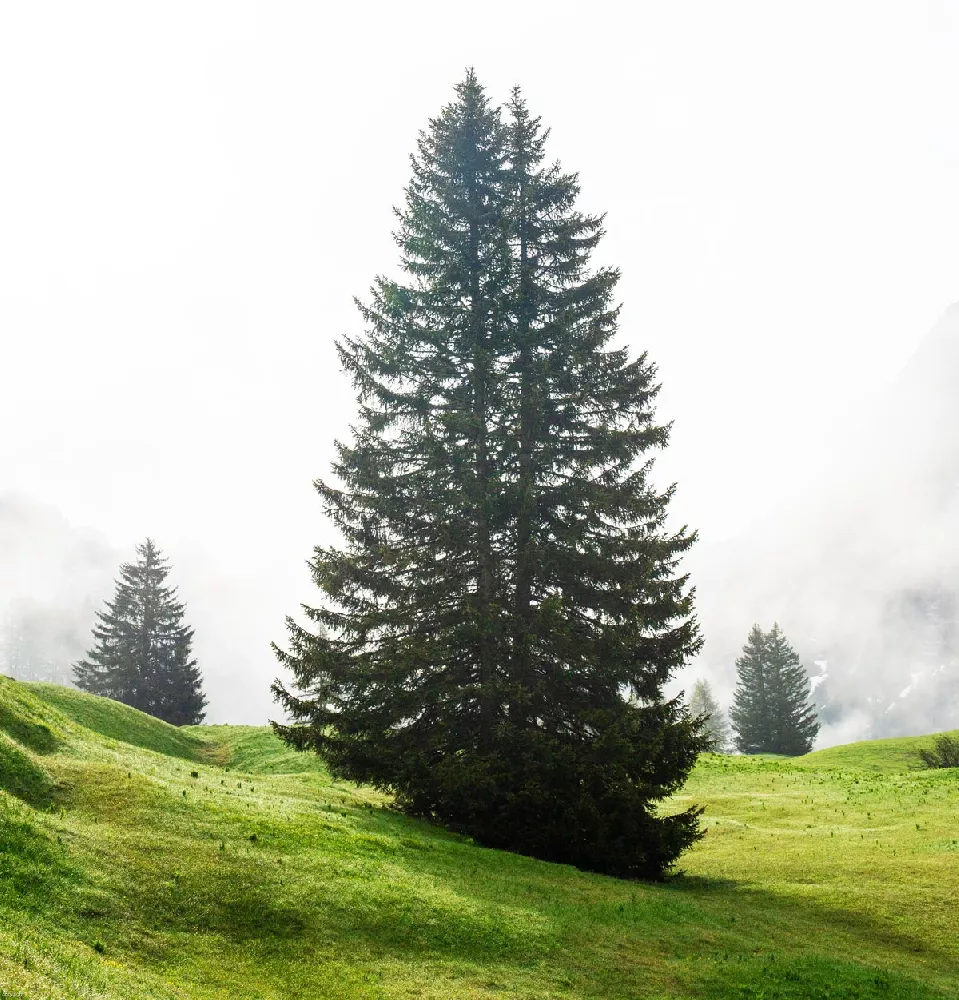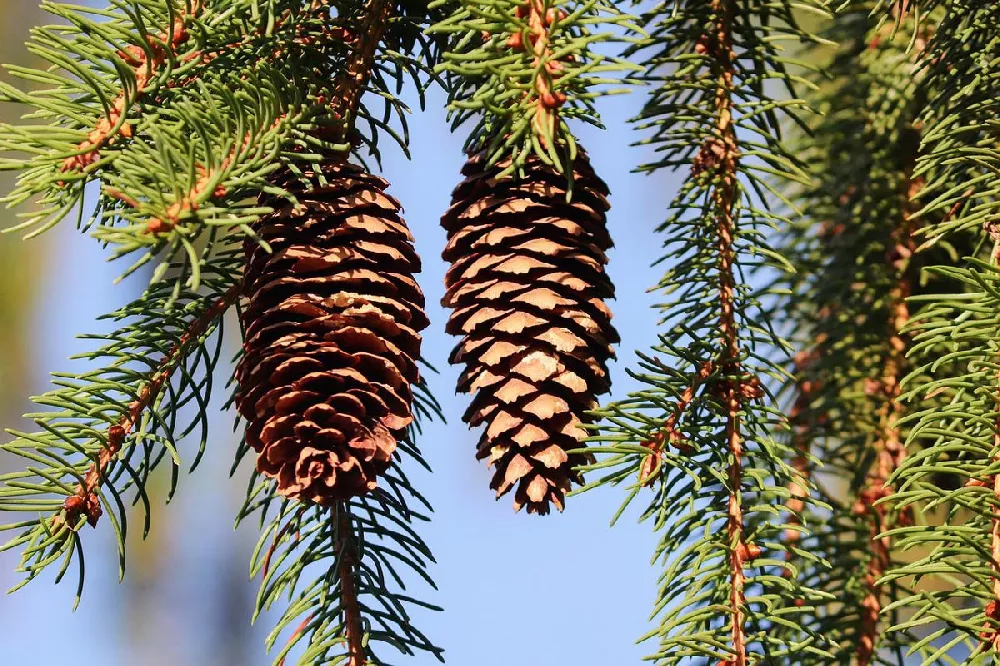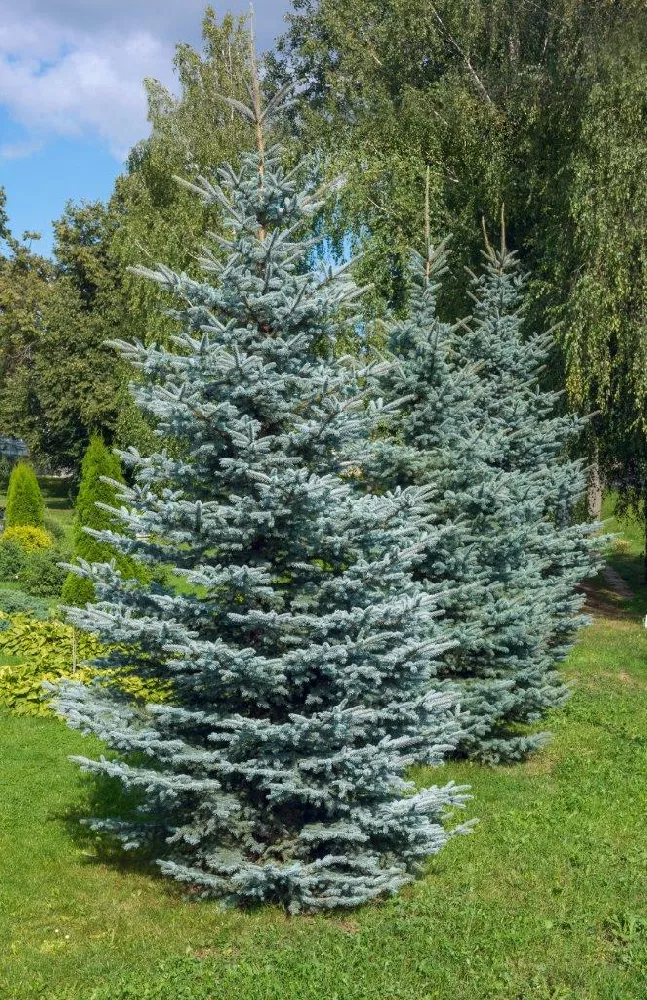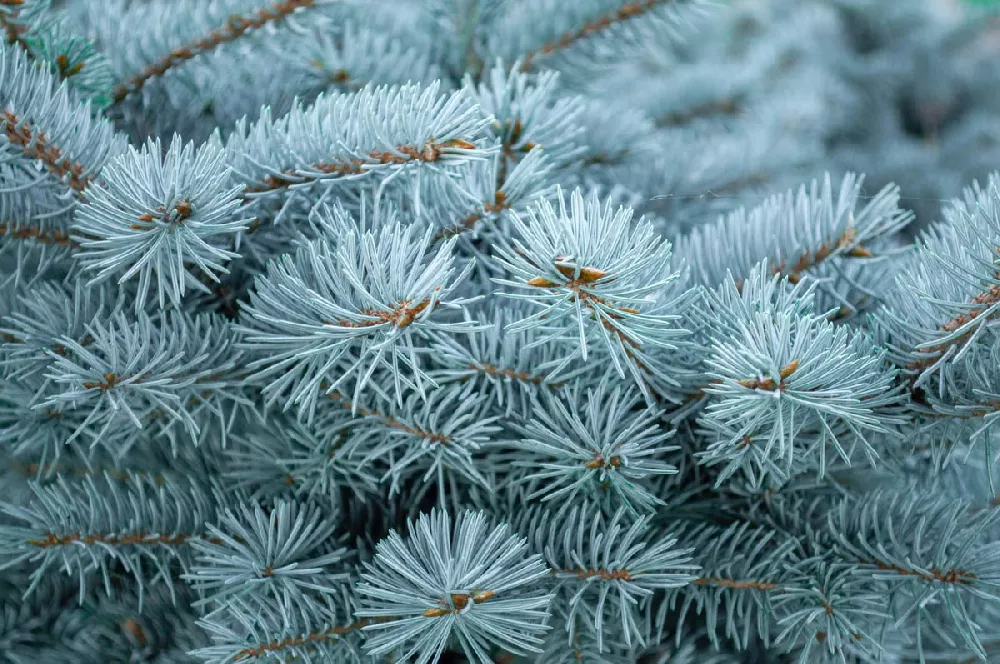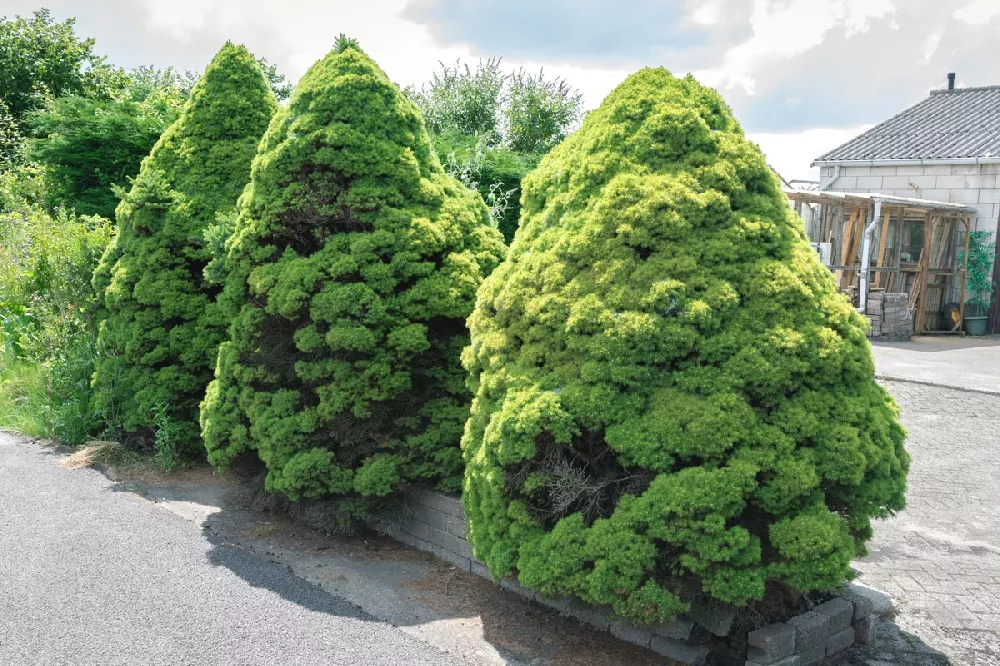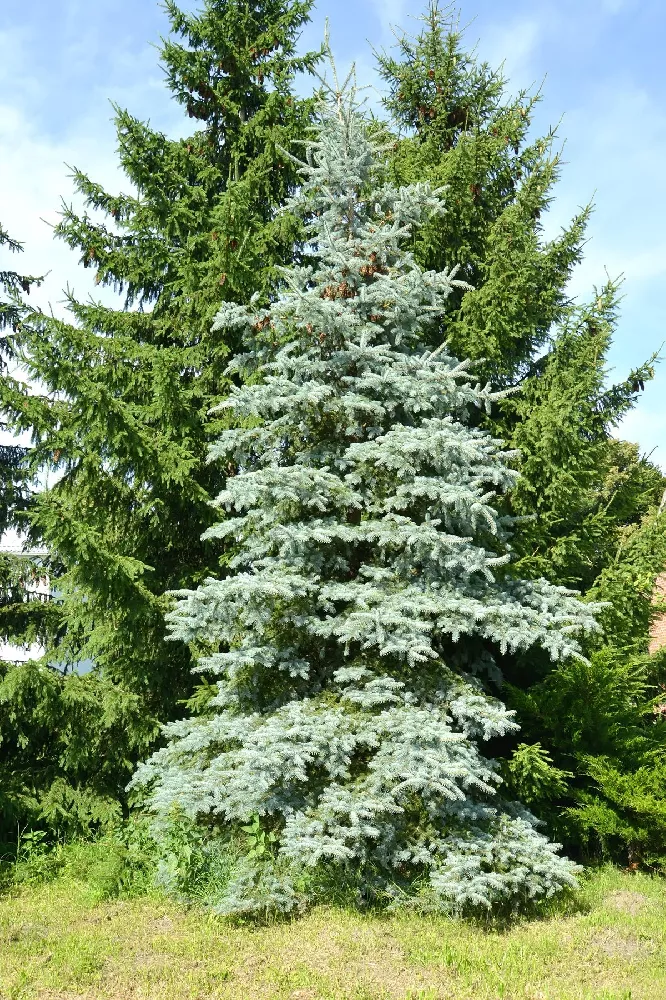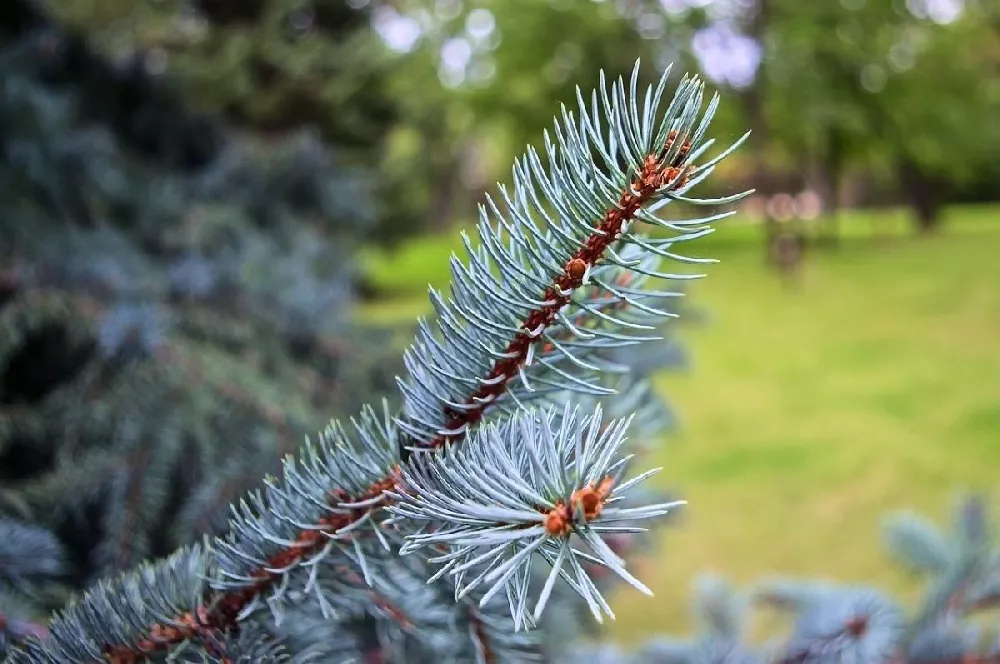- Home >
- Spruce Trees >
- Black Hills Spruce Tree
Black Hills Spruce Tree for Sale - Buying & Growing Guide
As is true for many spruces, the Black Hills spruce tree can serve as an excellent privacy screen and give your favorite garden spaces shelter from harsh winds. But what makes this cultivar, Picea glauca 'Densata,' special is that its evergreen foliage is not only denser than that of its parent species, but it also has a darker color. The Black Hills spruce tree also exhibits an excellent ability to withstand cold, surviving as far north as zone 2, and it creates a symmetrical cone shape without the need for any shaping.
- The Black Hills spruce tree is known for its excellent cold hardiness.
- Its dense form allows for excellent privacy and wind screening.
- Its beautiful needled foliage keeps a dark blue-green color year-round.
Enter your zip code to find nearby stores that may carry this plant.
Plant Care
Sunlight

Full sun is best, but this spruce tree tolerates partial shade as well.
Watering
Water about once per week during the growing season.
Fertilizing

Fertilize in early spring with a nitrogen-rich fertilizer.
Planting and Care
Planting instructions
The Black Hills spruce tree is a surprisingly versatile evergreen that can grow as a hedge and as a focal point specimen due to its pleasing form and rich foliage. Regardless of your stylistic preference, your Black Hills spruce tree grows best where there is full sun exposure every day. The Black Hills spruce tree also shows an ability to adapt to several types of soil, including both sandy soils and soils with considerable amounts of clay.
Watering and nutrients
After you plant a Black Hills spruce tree, you should plan to water it about once per day for the first week or two. Once your tree has established itself, you can reduce your watering schedule to about once per week. However, the Black Hills spruce tree can be somewhat drought-tolerant, meaning that you may get by with watering it less than weekly. You should fertilize your Black Hills spruce tree once per season in the early spring. When fertilizing, use a mix that has higher concentrations of nitrogen than phosphorus and potassium.
Pollination
The Black Hills spruce tree follows the pattern of all spruce trees — and all other coniferous species, for that matter. These trees all rely on the wind to carry their pollen from a male cone to a female cone. When this occurs, the female cone will develop a set of seeds. Later in the season, the cones will open and release those seeds, allowing the tree to reproduce. However, most gardeners won’t need to worry about pollination for this tree, as it does not produce any fruits that people commonly consume.
Pruning
Pruning for aesthetic purposes is essentially unnecessary when growing a Black Hills spruce tree, as these trees consistently produce a pleasing conical form reminiscent of a Christmas tree. The main reason to prune one of these trees is to remove any dead branches, which usually appear near the bottom of the tree, especially on the side that receives less sunlight. Still, even without pruning, this tree will likely look healthy and attractive for many years.
Pests, diseases, and animals
The most worrisome threat for many spruce trees is the fungal infection called Rhizosphaera needle cast. This disease often occurs after prolonged drought or if you follow an improper care routine for your tree. The Black Hills spruce tree can also be susceptible to several pest infestations, including bagworms, sawflies, red spiders, and others. Occasionally, the Black Hills spruce tree may also experience issues with root rot, but this problem is not as prevalent as other pest and disease complications.
Achieving maximum results
The Black Hills spruce tree may be one of the most dependable evergreens you can find, as it survives many soil conditions; grows in several hardiness zones; adapts to most soils, whether wet or dry; and can transplant easily. As such, the Black Hills spruce may be the answer for areas of your property in which other plants struggle to grow. You should also enjoy this plant’s minimal need for pruning. In fact, if you do choose to shear this plant, do so with caution, as removing too much can leave permanent bare spots.
FAQs
Do Black Hills spruce trees lose their needles?
How can you know if your Black Hills spruce tree has needle cast?
One of the most common issues for a spruce tree is Rhizosphaeraneedle cast, and you should be prepared to recognize it. When a spruce tree has this fungal infection, the newer foliage may remain green, but old needles will turn completely brown and die. The presence of many brown needles is the surest sign that your tree has Rhizosphaeraneedle cast. However, you should also know that certain environmental factors are likely to cause this issue. Mainly, excessive moisture and humidity are to blame.
Can you use Black Hills spruce as a Christmas tree?
The Black Hills spruce tree is an excellent Christmas tree option. Not only does the Black Hills spruce tree have the cone shape that is so familiar to those who celebrate Christmas, but it also has lovely branches that arc slightly upward, making for the perfect place to rest your ornaments. This tree also has dark foliage that makes the perfect contrast to your other holiday decor items.
Compare Similar Products
You can't add more Product Name - Product size to the cart.
OK